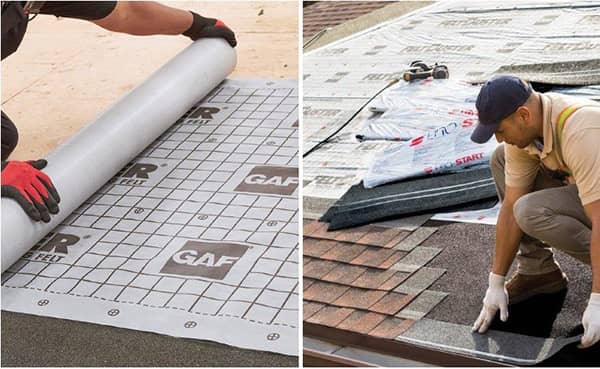Installing asphalt shingles is a common roofing project, and it’s crucial to follow the correct steps to ensure a watertight and long-lasting roof. Here is a detailed step-by-step guide on how roofing professionals typically install asphalt shingles:

[Warning: Do not attempt to follow this guide without the requisite skills and training. USA Premier Roofing does not recommend, nor advocate for anyone to install shingles on their own unless you are a trained roofing professional]
Materials and Tools You’ll Need:
- Asphalt shingles
- Roofing nails
- Roofing underlayment (usually felt paper or synthetic underlayment)
- Drip edge
- Roofing vents (ridge vents, soffit vents, etc., as needed)
- Flashing materials (for valleys, chimneys, and roof penetrations)
- Roofing cement or roofing adhesive
- Roofing nails
- Roofing nail gun
- Roofing hammer
- Tape measure
- Chalk line
- Utility knife
- Roofing shovel
- Roofing safety gear (safety harness, gloves, and appropriate clothing)
- Ladder
Step 1: Safety Precautions
Before starting, ensure you have the appropriate safety gear, including a safety harness, gloves, and proper clothing. Set up a ladder and secure it to the roof. Make sure the roof is dry and free of debris. Safety is the number #1 responsibility of every roofing professional.
Step 2: Roof Inspection and Preparation
Inspect the roof for any damage or structural issues. Replace any damaged or rotted roof decking. Install drip edge around the eaves and rakes to prevent water infiltration. Install roofing underlayment over the entire roof surface, starting at the eaves and working your way up the slope, overlapping the seams.
Step 3: Layout and Chalk Lines
Using a chalk line, create horizontal reference lines at the base of the roof and at every shingle course’s exposure height. This ensures that the shingles are installed straight and evenly spaced.
Step 4: Installing Starter Shingles
Begin at the eaves and install a row of starter shingles, with the adhesive strip facing up and the overhang at the eave edge. Nail these in place, following your chalk lines. This helps to seal the roof’s edge and provide a secure base for the rest of the shingles.
Step 5: Installing Asphalt Shingles
Start from the left or right corner and work your way up the roof. Each successive row should be offset from the previous row, typically by about 6 inches (or as per manufacturer instructions) to create a staggered pattern. Install shingles with the adhesive strip facing down and the overhang at the eave edge. Secure each shingle with two roofing nails, making sure the nails penetrate the shingle above it. Continue this process, working your way up the roof.
Step 6: Cutting Shingles
If you reach a roof penetration, valley, or edge, you may need to cut the shingles to fit. Use a utility knife to trim the shingles as needed. Make sure to maintain proper overhang and alignment.
Step 7: Installing Flashing
For roof penetrations, chimneys, and valleys, install appropriate flashing materials. These are essential to prevent water infiltration. Follow manufacturer guidelines for the specific type of flashing you’re using.
Step 8: Ridge Shingles (and hip shingles if necessary)
Once you reach the ridge, install ridge shingles or a ridge vent, following the manufacturer’s instructions. Ridge shingles are usually nailed in place, while ridge vents allow for proper ventilation.
Step 9: Sealants and Adhesive
Use roofing cement or roofing adhesive as needed to seal around roof penetrations, edges, and any shingles that may not lay flat.
Step 10: Cleanup and Inspection
Clean up any debris from the job site, and inspect the roof to ensure all shingles are properly aligned and secured.
Proper installation of asphalt shingles is essential to the longevity and performance of your roof. If you are not experienced it’s strongly advised to hire a professional roofing company, such as USA Premier Roofing, to ensure the job is done correctly and safely.
[Warning: Do not attempt to follow this guide without the requisite skills and training. USA Premier Roofing does not recommend, nor advocate for anyone to install shingles on their own unless you are a trained roofing professional]
